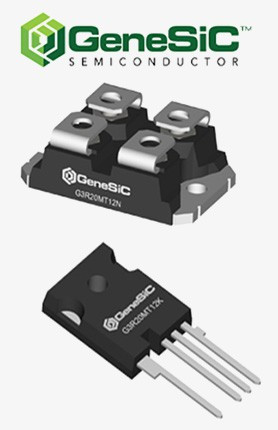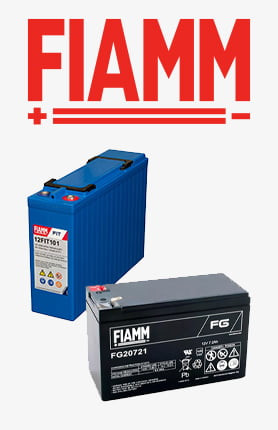Musisz być zalogowany/a
-
WróćX
-
Alkatrészek
-
-
Kategória
-
Félvezetők
- Diódák
- Tirisztorok
-
Elektromosan szigetelt modulok
- VISHAY (IR) elektromosan szigetelt modulok
- INFINEON (EUPEC) elektro-szigetelt modulok
- A Semikron elektromosan szigetelt moduljai
- POWEREX elektroszigetelt modulok
- IXYS elektromosan szigetelt modulok
- Elektro-szigetelt modulok a POSEICO-tól
- Az ABB elektromosan szigetelt moduljai
- Elektro-szigetelt modulok a TECHSEM-től
- Przejdź do podkategorii
- Híd egyenirányítók
-
Tranzisztorok
- GeneSiC tranzisztorok
- Mitsubishi SiC MOSFET modulok
- STARPOWER SiC MOSFET modulok
- ABB SiC MOSFET modulok
- IGBT modulok a MITSUBISHI-tól
- MITSUBISHI tranzisztor modulok
- MITSUBISHI MOSFET modulok
- ABB tranzisztor modulok
- IGBT modulok a POWEREX-től
- IGBT modulok – az INFINEON-tól (EUPEC)
- Szilícium-karbid félvezető elemek
- Przejdź do podkategorii
- Drivers
- Tápblokkok
- Przejdź do podkategorii
- LEM áram- és feszültségátalakítók
-
Passzív alkatrészek (kondenzátorok, ellenállások, biztosítékok, szűrők)
- Ellenállások
-
Biztosítékok
- Miniatűr biztosítékok ABC és AGC sorozatú elektronikus rendszerekhez
- Gyors működésű cső alakú biztosítékok
- Késleltetett lapkák GL/GG és AM karakterisztikával
- Ultragyors biztosítékok
- Brit és amerikai szabványos gyors működésű biztosítékok
- Gyors működésű európai szabványú biztosítékok
- Vontatási biztosítékok
- Nagyfeszültségű biztosítékok
- Przejdź do podkategorii
-
Kondenzátorok
- Kondenzátorok motorokhoz
- Elektrolit kondenzátorok
- Jégfilm kondenzátorok
- Teljesítménykondenzátorok
- Kondenzátorok egyenáramú áramkörökhöz
- Teljesítménykompenzációs kondenzátorok
- Nagyfeszültségű kondenzátorok
- Kondenzátorok indukciós fűtéshez
- Impulzuskondenzátorok
- DC LINK kondenzátorok
- Kondenzátorok AC/DC áramkörökhöz
- Przejdź do podkategorii
- Interferencia szűrők
- Szuperkondenzátorok
- Túlfeszültség elleni védelem
- TEMPEST Felfedő emissziós szűrők
- Túlfeszültség-levezető
- Przejdź do podkategorii
-
Relék és kontaktorok
- Relék és kontaktorok elmélete
- AC háromfázisú félvezető relék
- DC szilárdtest relék
- Szabályozók, vezérlőrendszerek és tartozékok
- Lágyindítás és irányváltó kontaktorok
- Elektromechanikus relék
- Kontaktorok
- Forgókapcsolók
-
Egyfázisú AC szilárdtest relék
- Egyfázisú váltakozó áramú szilárdtestrelék, 1. sorozat | D2425 | D2450
- Egyfázisú AC szilárdtest relék CWA és CWD sorozat
- Egyfázisú AC szilárdtest relék CMRA és CMRD sorozat
- Egyfázisú AC félvezető relék PS sorozat
- AC szilárdtest relék kettős és négyes sorozatú D24 D, TD24 Q, H12D48 D
- GN sorozatú egyfázisú szilárdtest relék
- Egyfázisú AC szilárdtest relék CKR sorozat
- Egyfázisú AC DIN sínes relék ERDA és ERAA SERIES
- Egyfázisú váltakozó áramú relék 150A áramerősséghez
- Kettős szilárdtest relék DIN sínes hűtőbordával integrálva
- Przejdź do podkategorii
- AC egyfázisú nyomtatható félvezető relék
- Interfész relék
- Przejdź do podkategorii
- Magok és egyéb induktív alkatrészek
- Radiátorok, Varisztorok, Hővédelem
- Ventillátorok
- Klíma, Kapcsolószekrény tartozékok, Hűtők
-
Akkumulátorok, töltők, puffer tápegységek és átalakítók
- Akkumulátorok, töltők - elméleti leírás
- Lítium-ion akkumulátorok. Egyedi akkumulátorok. Akkumulátorkezelő rendszer (BMS)
- Akkumulátorok
- Akkumulátortöltők és tartozékok
- UPS és puffer tápegységek
- Átalakítók és tartozékok napelemekhez
- Energiatárolás
- Hidrogén üzemanyagcellák
- Lítium-ion cellák
- Przejdź do podkategorii
- Automatizálás
-
Kábelek, Litz vezetékek, vezetékek, rugalmas csatlakozások
- Vezetékek
- Kábeltömszelencék és -hüvelyek
- Arcok
-
Kábelek speciális alkalmazásokhoz
- Hosszabbító és kiegyenlítő kábelek
- Hőelem kábelek
- Csatlakozó kábelek PT érzékelőkhöz
- Többeres kábelek hőm. -60°C és +1400°C között
- SILICOUL középfeszültségű kábelek
- Gyújtókábelek
- Fűtőkábelek
- Egyeres kábelek hőm. -60°C és +450°C között
- Vasúti vezetékek
- Fűtőkábelek pl
- Kábelek a védelmi ipar számára
- Przejdź do podkategorii
- pólók
-
Zsinór
- Lapos zsinór
- Kerek fonatok
- Nagyon rugalmas fonat - lapos
- Nagyon rugalmas zsinór - kerek
- Hengeres rézfonatok
- Réz hengeres fonatok és borítások
- Rugalmas földelő hevederek
- Horganyzott és rozsdamentes acélból készült hengeres fonatok
- PVC szigetelt rézfonatok - 85 fokos hőmérsékletig
- Lapos alumínium fonatok
- Csatlakozókészlet - zsinórok és csövek
- Przejdź do podkategorii
- Vontatási berendezések
- Kábelsaruk
- Szigetelt rugalmas sínek
- Többrétegű rugalmas sínek
- Kábelkezelő rendszerek
- Przejdź do podkategorii
- Az összes kategória megtekintése
-
Félvezetők
-
-
- Szállítók
-
Alkalmazások
- Bányászat, kohászat és öntöde
- Berendezések elosztó- és kapcsolószekrényekhez
- CNC gépek
- DC és AC hajtások (inverterek)
- Energetika
- Energia bankok
- Faszárító és -feldolgozó gépek
- Gépek műanyagok hőformázásához
- Hegesztőgépek és hegesztők
- Hőmérséklet mérés és szabályozás
- HVAC automatizálás
- Indukciós fűtés
- Ipari automatizálás
- Ipari védőfelszerelés
- Kutatási és laboratóriumi mérések
- Motorok és transzformátorok
- Nyomtatás
- Robbanásveszélyes zónák alkatrészei (EX)
- Tápegységek (UPS) és egyenirányító rendszerek
- Villamos és vasúti vontatás
-
Telepítés
-
-
Induktorok
-
-
Indukciós eszközök
-
-
Szolgáltatás
-
- Kapcsolat
- Zobacz wszystkie kategorie
How to choose the right resistive touch panel for industrial applications

In the industry, automation and digitization of processes are increasingly important, often involving the use of advanced user interfaces like touch panels. In many industrial applications, choosing the right touch panel is a challenge, especially when adapting to specific working conditions such as high humidity, dust, or the need for glove operation. Resistive touch panels are a popular choice in industrial applications due to their durability and reliability. In the article below, we will discuss what to consider when selecting the appropriate resistive touch panel for industrial applications.
Advantages of Resistive Touch Panels
Resistive touch panels are known for their high sensitivity and resistance to harsh environmental conditions. Unlike capacitive touch screens, which require conductivity (e.g., finger contact), a resistive screen operates based on pressure. This means that a resistive touch screen can be operated not only by finger but also by stylus, tool, or even while wearing gloves, which is extremely useful in industrial environments.
The main advantages of resistive screens are:
- High pressure sensitivity – The resistive touch screen can precisely detect pressure, even when using objects other than a finger.
- Resistance to contamination – Resistive touch panels are less susceptible to the effects of dust, moisture, or dirt, making them ideal for environments with high levels of contamination.
- Low cost – Compared to other touch technologies, resistive touch screens can be a more economical choice, which is important for larger investments in industrial infrastructure.
What Features Should a Resistive Touch Panel Have for Industrial Applications?
When choosing a resistive touch screen, it's essential to consider several key parameters that will impact its longevity and reliability in demanding industrial environments. Here’s what to keep in mind:
- Resistance to Harsh Environmental Conditions
In industry, screens are exposed to a range of factors such as dust, moisture, temperature fluctuations, and chemicals. Resistive touch panels, thanks to their layer-based construction, are often more resistant to these factors than other types of screens. It is advisable to choose models with additional protection against dust and water, suitable for operation even in extreme conditions.
- Sensitivity and Accuracy
For industrial applications, it is important that the resistive screen is not only durable but also precise. In areas requiring millimeter accuracy, such as laboratories or production lines, a precise resistive panel can ensure optimal performance without risk of error. Most resistive touch panels allow sensitivity adjustment, which is advantageous in various operating conditions.
- Compatibility with Gloves and Tools
In heavy industry, where workers often use protective gloves, traditional capacitive touch panels may not be convenient. A resistive touch panel allows for easy operation in gloves, which enhances both usability and safety. This way, operators can effectively use the interface without removing protective gloves.
- Scratch and Mechanical Damage Resistance
Due to their construction, resistive touch panels are resistant to accidental mechanical damage, which is crucial in environments where devices are exposed to contact with hard objects or tools. It's recommended to select a resistive screen coated with a scratch-resistant layer to ensure a longer lifespan and aesthetic appearance.
- Ease of Maintenance and Low Maintenance Costs
Resistive touch panels are relatively easy to maintain, which reduces operational costs. In industrial conditions, where regular disinfection or cleaning of screens is necessary, the resistive touch screen allows easy cleaning without risk of damage.
Types of Industrial Applications Where Resistive Touch Panels Excel
Resistive touch panels are widely used in many industrial sectors. Here are examples of applications where a resistive touch screen may be the best choice:
- Industrial Automation
In production plants where touch panels are part of machinery and equipment, resistive screens allow precise operation even in harsh conditions. For operators working in gloves, a resistive touch panel provides a convenient way to manage production processes.
- Chemical and Pharmaceutical Industries
In these industries, it is crucial that the resistive touch screen is resistant to chemical exposure and easy to disinfect. Since the resistive screen operates independently of moisture or chemical presence, it is a safe choice for applications that require working in a chemical environment.
- Transport and Logistics
In the logistics industry, resistive touch panels are used in terminals for supply chain management and resource monitoring. Their resistance to contamination and compatibility with gloves make resistive touch screens a popular choice in this sector.
- Energy and Heavy Industry
In power plants and industrial facilities, where touch panels are exposed to high temperatures, dust, or vibrations, the resistive screen performs well due to its durability. In this environment, a resistive touch screen provides a stable operation with minimal maintenance requirements.
Available Types of Resistive Touch Panels
Various types of resistive touch panels are available on the market, differing in parameters, construction, and protection level. Key types include:
- 4-wire resistive touch panels – The simplest type of resistive screens, primarily used in applications that do not require high precision. These are economical solutions suitable for less demanding environments.
- 5-wire resistive touch panels – Provide greater precision and longer lifespan. This resistive touch screen technology is used where high durability and resistance are required.
- 8-wire resistive touch panels – These advanced screens are designed for applications requiring the highest accuracy and resistance. Resistive touch panels in this technology are characterized by increased durability against mechanical damage.
Conclusion
Resistive touch panels are an excellent choice for industry due to their resistance to harsh conditions and suitability for various environments. When selecting the appropriate resistive touch panel, it is important to consider the specific application requirements, such as contamination resistance, glove compatibility, and high precision needs.
Related products
Related posts
 Nowości w dziale zasilacze, przetwornice i inwertery – inwertery Premium
Nowości w dziale zasilacze, przetwornice i inwertery – inwertery Premium
 Oświetlenie do obrabiarek– oprawy KIRA!
Oświetlenie do obrabiarek– oprawy KIRA!






Leave a comment